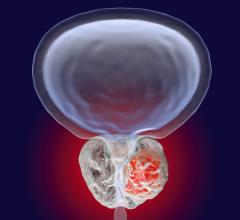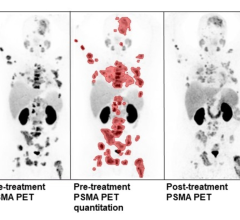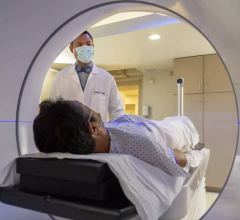April 27, 2022 — Lumea, a global leader in integrated digital pathology solutions and Verily, an Alphabet precision ...
Prostate Cancer
News and new technology innovations concerning how imaging technology can help diagnose and treat prostate cancer can be found on this channel.
April 25, 2022 — Over the past 15 years, public health authorities have downgraded recommendations for the prostate ...
April 19, 2022 — Blue Earth Therapeutics, a Bracco company and emerging leader in the development of innovative next ...
Detecting metastatic disease early is key. Sand Lake Imaging, Florida, provides great value to both patients and ...
April 15, 2022 — Prostate cancer is the most common malignant tumor in men in Germany, with about 62,000 new cases ...
April 11, 2022 — A novel nuclear medicine combination therapy has been proven safe and effective in men with heavily pre ...
April 11, 2022 — RSIP Vision, an experienced leader in driving innovation for medical imaging through advanced ...
April 6, 2022 — Research in the March 2022 issue of JNCCN—Journal of the National Comprehensive Cancer Network examined ...
April 6, 2022 — On Friday, April 1 at 2 p.m., the Milton and Caroll Petrie Department of Urology at Mount Sinai will ...
April 5, 2022 — The American College of Radiology (ACR) has selected 22 teams as the first cohort of the ACR Learning ...
March 28, 2022 — ITM Isotope Technologies Munich SE (ITM), a leading radiopharmaceutical biotech company, supports ...
March 23, 2022 — With today’s U.S. Food and Drug Administration (FDA) approval of 177Lu-PSMA-617—a radiopharmaceutical ...
March 23, 2022 — A new study from Keck Medicine of USC finds that the incidence rate of metastatic prostate cancer has ...
March 11, 2022 — NorthStar Medical Radioisotopes, LLC, a global innovator in the development, production and ...
February 18, 2022 — Blue Earth Diagnostics, a Bracco company and recognized leader in the development and ...
February 17, 2022 — An interim analysis of an ongoing Phase III study from UCLA Jonsson Comprehensive Cancer Center ...
The American College of Radiology (ACR) reports that several states are considering breast, colon and lung cancer ...
February 3, 2022 — The American Society for Radiation Oncology (ASTRO) issued the following statement from ASTRO Board ...
February 2, 2022 — Urgent and immediate action must be taken to ensure more effective and equitable implementation of ...
January 24, 2022 — New research has confirmed the accuracy of the novel European Association of Urology (EAU) risk ...
January 19, 2022 — For the first time, researchers led by a team from the UCLA Jonsson Comprehensive Cancer Center used ...


 April 27, 2022
April 27, 2022 


















